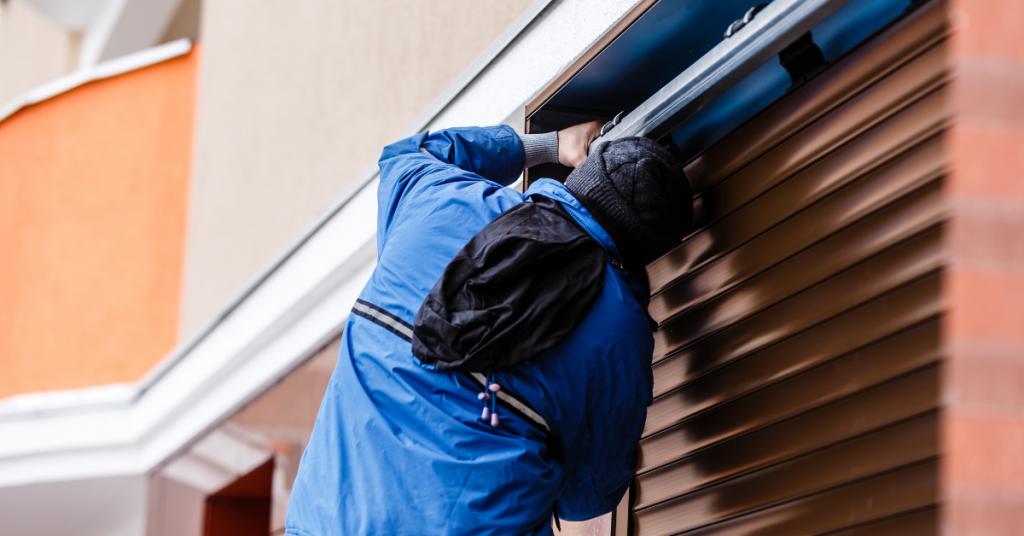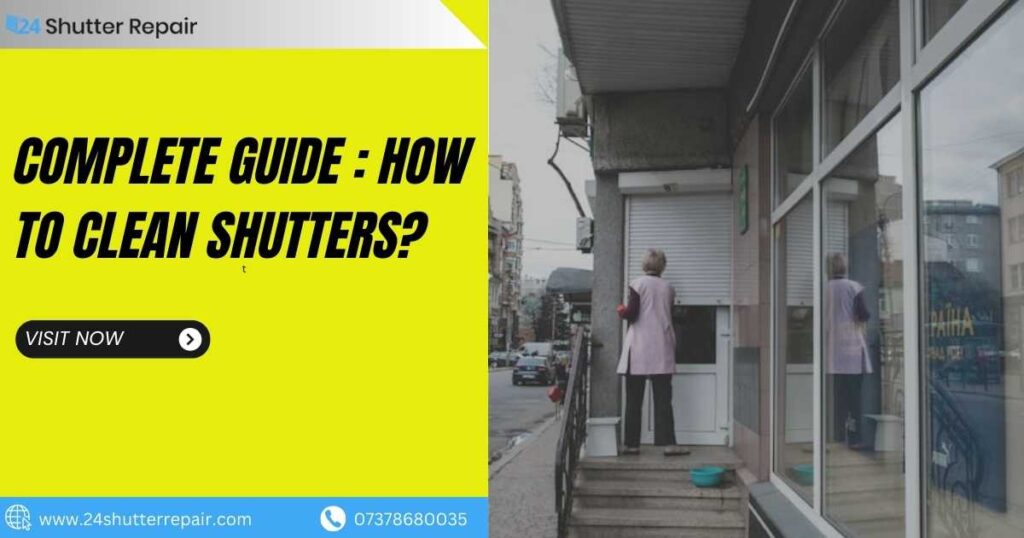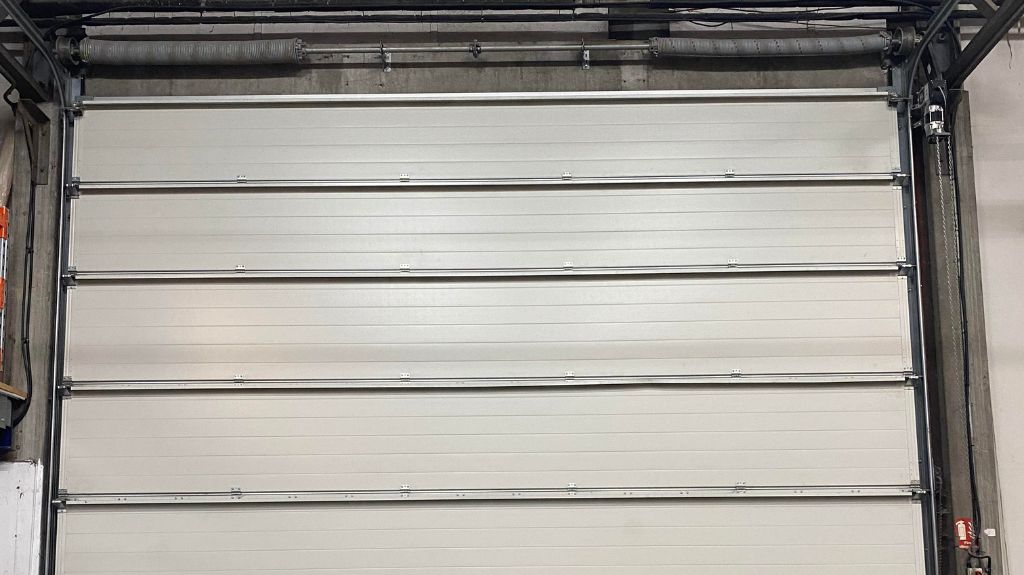Key Highlights
- Cleaning shutters is an important part of their maintenance and can help them last longer.
- There are different types of shutters, including wooden, vinyl, and aluminium, each requiring specific care.
- The key to cleaning shutters effectively is to use the right tools and cleaning solutions.
- Follow a step-by-step guide to clean shutters properly, including dusting, wiping, drying, and polishing.
- Regular cleaning and preventative measures can help keep shutters clean for longer and maintain their longevity.
Introduction
Cleaning shutters is an essential part of their maintenance and can help them maintain their beauty and functionality for years to come. Whether you have wooden shutters, vinyl shutters, or aluminium shutters, regular cleaning is necessary to remove dirt, dust, and stains. By following some simple tips and using the right tools and cleaning solutions, you can easily clean your shutters like a pro.
Shutters not only add a classic and elegant look to your space but also provide a range of lifestyle benefits. They offer privacy, light control, and insulation, making them a popular choice for many homeowners. However, to ensure that your shutters continue to enhance your space, it is important to keep them clean and well-maintained.
In this blog, we will provide you with a handy guide on how to clean shutters effectively.

Understanding Different Types of Shutters
Before we dive into the cleaning process, it is important to understand the different types of shutters available. This will help you identify the material of your shutters and determine the best cleaning methods.
- Wooden Shutters: Wooden shutters offer a classic and timeless look. They require gentle cleaning to avoid damaging the wood.
- Plantation Shutters: Plantation shutters are a popular choice for their versatility and style. They can be made from various materials, including wood, vinyl, or composite.
- Industrial Roller Shutters: Industrial roller shutters are commonly used for commercial and industrial settings. They are designed to provide security and durability.
- Waterproof Shutters: Waterproof shutters are ideal for areas with high moisture, such as bathrooms and kitchens. They are resistant to water and humidity.
- Solid Shutters: Solid shutters are made from a single piece of material and provide excellent insulation and privacy. They can be made from wood, MDF, or composite materials.
Understanding the type of shutters you have will help you determine the most suitable cleaning methods and solutions for your specific shutters.
Identifying Your Shutter Material
To clean shutters effectively, it is important to identify the material of your shutters. Different materials require different cleaning methods and solutions.
- Wooden Shutters: Wooden shutters require gentle cleaning to avoid damaging the wood. Avoid using excessive water or harsh cleaning products. Instead, use a dry or slightly damp cloth to remove dust and stains. If necessary, you can use a mild dish soap diluted with water for tougher stains.
- Vinyl Shutters: Vinyl shutters are easy to clean and maintain. They can withstand moisture and are resistant to stains. Use a soft cloth or sponge with warm water and mild dish soap to wipe down the shutters. Avoid using abrasive cleaners or harsh chemicals that can damage the vinyl.
- Aluminium Shutters: Aluminium shutters are durable and resistant to rust. They can be easily cleaned with a soft cloth or sponge and mild dish soap. Avoid using abrasive cleaners or scrub brushes that can scratch the surface of the shutters.
By identifying the material of your shutters, you can choose the most appropriate cleaning methods and solutions to ensure their longevity and beauty.
DIY Cleaning Mixes vs. Commercial Cleaners
When deciding between DIY cleaning mixes and commercial cleaners for your shutters, consider the ingredients and effectiveness. DIY mixes often involve common household items like white vinegar and mild dish soap, providing a cost-effective and eco-friendly option. On the other hand, commercial cleaners are formulated for specific materials, ensuring efficient removal of dirt and stains. Opt for DIY mixes for routine cleaning and commercial cleaners for tougher stains or delicate materials, making your choice based on convenience and the level of cleaning required.
Preparing to Clean Your Shutters: What You’ll Need
To effectively clean shutters, gather essential tools like
1. Safety gear: Gloves, safety goggles, and respirator mask if needed.
2. Cleaning solutions: Mild detergent, degreaser, multi-surface cleaner, rust remover.
3. Tools: Soft-bristled brush, squeegee, microfiber cloths, sponge, extension pole.
4. Rinse and dry: Hose or pressure washer, towels, vacuum cleaner.
5. Maintenance: Lubricant, touch-up paint, WD-40.
6. Access: Ladder or scaffold if required.
7. Waste disposal: Trash bags or bins.
8. Optional: Power tools, steam cleaner, polish or wax.
Step-by-step Guide to Cleaning Shutters
Step 1: Dusting Off Surface Dirt
Using a feather duster or a slightly damp cloth, gently remove surface dust and dirt from your shutters. Start from the top and work your way down, ensuring you cover all slats and louvres. For hard-to-reach areas, consider using a vacuum cleaner with a brush attachment or a slatted blind cleaner. Pay close attention to corners and crevices where dust tends to accumulate. Regular dusting not only keeps your shutters looking clean but also helps maintain their longevity and functionality.
Step 2: Deep Cleaning Techniques for Stubborn Stains
When facing stubborn stains on your shutters, opt for a mild detergent mixed with warm water for effective cleaning. Using a soft brush attachment on a vacuum cleaner can help loosen ingrained grime without damaging the surface.
For wood shutters, consider a mix of white vinegar and water to tackle tougher stains.
Use slightly damp cloth to avoid excess moisture on vinyl shutters.
Remember, gentle strokes and patience are key to preserving the longevity and functionality of your shutters.
Step 3: Drying and polishing for a Pro Finish
After cleaning your shutters thoroughly, the final step for a professional finish involves drying and polishing. Use a dry cloth to remove any remaining moisture, ensuring no water spots are left behind. For a polished look, gently wipe down the shutters with a microfiber cloth or a dryer sheet. This step not only enhances the appearance of your shutters but also helps in maintaining them for longer-lasting results. Polishing also adds a protective layer, keeping your shutters looking pristine.
Special Care for Different Shutter Materials
Tips for Wooden Shutter Maintenance
To maintain wooden shutters, use a feather duster or slightly damp cloth for routine cleaning. For heavier stains, mix warm water with mild dish soap. Avoid excess moisture to prevent damage. Apply a wood-friendly cleaner if needed. Inspect regularly for cracks or warping. Oil hinges and moving parts annually for smooth operation. Consider professional consultation for refinishing or repairs. With proper care, wooden shutters can enhance the aesthetic of your space for years to come.
Caring for Vinyl and Aluminum Shutters
For vinyl and aluminum shutters, regular maintenance is key to prolonging their lifespan. Start by dusting them with a feather duster or a slightly damp cloth to remove surface grime and dirt. For tougher stains, use a mix of warm water and mild detergent. Avoid abrasive cleaners that may damage the surface. Remember to rinse with clear water and dry thoroughly to prevent water spots. Apply a silicone-based lubricant to hinges for smooth functionality and inspect for any signs of wear or damage regularly.
Preventative Measures to Keep Shutters Clean Longer
Routine maintenance is key to prolonging the cleanliness of your shutters. Establishing a regular cleaning schedule can prevent stubborn buildup. Apply protective coatings or treatments appropriate for the material to shield against dirt and grime. Use UV inhibitors for wooden shutters to prevent color fading. Install waterproof shutters in moisture-prone areas like kitchens or bathrooms. Implementing these measures can significantly extend the longevity of your shutters, reducing the frequency of intensive cleaning sessions.
Routine Cleaning Schedules
Establishing routine cleaning schedules for your shutters is vital to maintain their appearance and longevity. Aim for a weekly dusting with a feather duster or slightly damp cloth to remove surface dirt. A monthly deep clean using warm water and mild dish soap will keep them looking their best. Additionally, semi-annual inspections for any heavier stains or grime build-up are recommended. Consistency is key to ensuring your shutters remain in top condition year-round.
Protective Treatments and Products
To safeguard your shutters, consider applying protective treatments like clear water repellent or waterproof polyvinyl coatings. These products enhance durability against moisture and stains. Regularly using mild detergents with waterproof shutters can prolong their longevity and retain their color vibrancy, preserving their functionality for years. Implementing these top tips along with suitable cleaning routines ensures your shutters require little maintenance while offering the best lifestyle benefits. Explore various protective products available to maintain the pristine condition of your shutters effortlessly.
Troubleshooting Common Shutter Cleaning Challenges
Dealing with water spots and streaks can be tackled by wiping the affected areas with a solution of white vinegar and water. For removing oxidation and reviving colors, a little mild detergent mixed with warm water can work wonders. Utilize a soft brush or cloth to gently scrub the shutters. Ensuring a thorough rinse and proper drying will help maintain their appearance. By addressing these common issues promptly, you can preserve the quality and longevity of your shutters.
Dealing with Water Spots and Streaks
To tackle water spots and streaks on your shutters, start by mixing equal parts of white vinegar and water in a spray bottle. Lightly spritz the affected areas and let the solution sit for a few minutes. Then, gently wipe the spots with a clean, slightly damp cloth. For stubborn streaks, add a drop of mild dish soap to the mix. Finish by wiping the shutters with a dry cloth to prevent water damage and streaking.
Removing Oxidation and Restoring Color
To restore color and remove oxidation from your shutters, utilize a mixture of warm water and mild detergent. Gently scrub the affected areas with a soft brush or slightly damp cloth. For stubborn oxidation, add a small amount of white vinegar to the solution. Rinse with clear water and dry thoroughly. To revive the color, consider using a suitable wood polish or vinyl restoration product. Regular maintenance can prevent oxidation and keep your shutters looking vibrant and fresh.
Get in Touch If you are looking for Roller Shutter Repair or Installation Services.
24 Shutter Repair Ltd
Address: 57 Camden Road, London NE1 9EU
Contact: +447378680035
Email: 24shutterrepairltd@gmail.com
Website: https://24shutterrepair.co.uk/
Can I Use Vinegar to Clean My Shutters?
Yes, you can use vinegar as a safe and natural cleaner for your shutters. Mix equal parts water and white vinegar, dampen a cloth with the solution, and gently wipe down the shutters. Vinegar is effective in removing dirt and grime while being gentle on the surface.
How Often Should Shutters Be Cleaned?
Shutters should be cleaned regularly (at least once a week) to maintain their appearance and longevity. A weekly dusting and a monthly deep-clean are recommended. However, the cleaning frequency may vary depending on the location, level of dirt, and material of the shutters.
How do I keep my shutters dust free?
Regular dusting with a microfiber cloth or vacuum attachment can help keep your shutters free of dust. Additionally, using a mild solution of water and dish soap can effectively clean dirt buildup.
How do you clean oxidation off shutters?
To clean oxidation off shutters, use cleaning products specifically designed for oxidation removal. Follow the instructions provided and gently clean the affected areas. Regular maintenance and cleaning can help prevent oxidation buildup.
How can I make my shutters white again?
To make white shutters white again, consider using whitening methods specifically designed for shutters. These methods may include cleaning solutions or stain removal products. Follow the instructions provided and test a small area before applying to the entire shutter surface.








